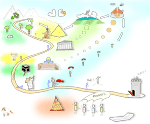Second step
towards the analysis
of dreams.
Many people must be wondering why so many digressions before tackling the decoding of dreams. Let them be reassured ! We have not lost sight of the goal .
Indeed, we first formulated hypotheses concerning the functioning of the brain during REM sleep.
The extinction of voluntary control allowed us to understand that the brain, during this sleep, no longer reacts to the daytime reality dependent on the social context and the established rules, but to another reality related to the individual instinct [see : Hypotheses-in french].
The social context, which is highly variable, led us to look at the way in which different societies have dealt with the content of dreams. We have gone over a thousand and one ways of understanding them according to the cultures and knowledge of each era [see : the dream throughout the ages-in french].
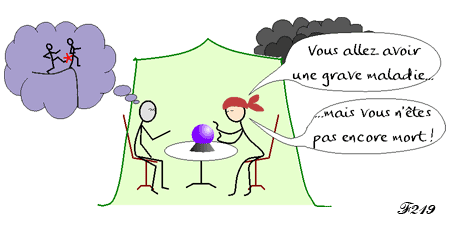
These multiple methods show to what extent almost everything has been said about dreams and their possible meaning.
This work has made it possible to observe how much man's awareness of the surrounding world seems to have weakened, while his capacity for social adaptation has improved, sometimes to the detriment of reality.
Similarly, we discovered that his brain was capable of denying his instinctive functions, even though they were adapted to the reality of life.
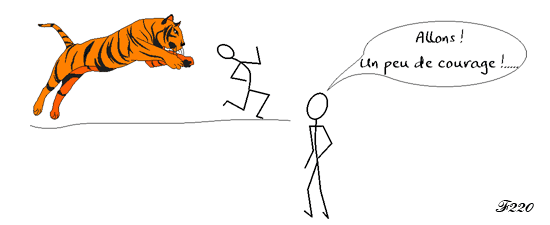
How, then, can we envisage a new approach to the meaning of dreams without the current scientific discoveries, which are the only ones capable of allowing us to better understand the functioning of the brain ?
Indeed, we will discover that the brain does not create new functions linked to new environmental needs. More often than not, it simply uses an existing function to redirect it towards another capacity : this is how the brain area for recognising faces was reorganised for recognising writing [see : Learning to read-in french].
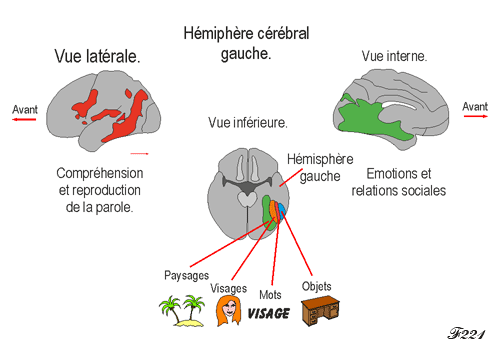
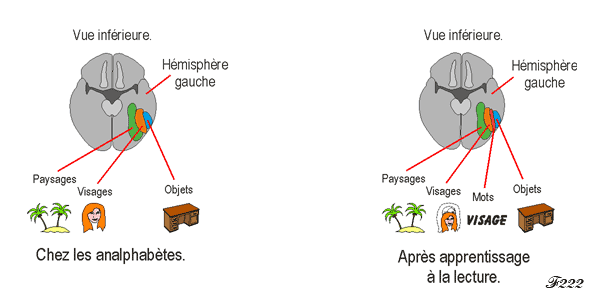
Thus, as the brain develops one ability, it may weaken another.
By learning to inhibit instinctive functioning, could humans also be able to deny the reality that might arise from dreams ? [see : The extinction of consciousness-in french] .
It is therefore by taking an interest in neuroscience research that we will now try to understand how our consciousness functions, and what differentiates it from that other capacity of the brain which escapes us and belongs to the domain we call « the unconscious ».
3rd stage of dream interpretation :
La conscience : (in french)
Consciousness : (soon)
Indeed, we first formulated hypotheses concerning the functioning of the brain during REM sleep.
The extinction of voluntary control allowed us to understand that the brain, during this sleep, no longer reacts to the daytime reality dependent on the social context and the established rules, but to another reality related to the individual instinct [see : Hypotheses-in french].
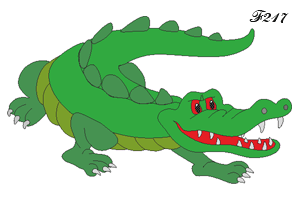 |
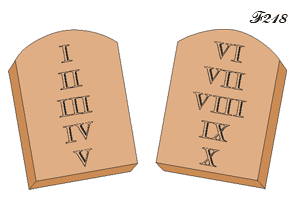 |
Instinct and rules, although complementary, may prove incompatible.
The social context, which is highly variable, led us to look at the way in which different societies have dealt with the content of dreams. We have gone over a thousand and one ways of understanding them according to the cultures and knowledge of each era [see : the dream throughout the ages-in french].

These multiple methods show to what extent almost everything has been said about dreams and their possible meaning.
This work has made it possible to observe how much man's awareness of the surrounding world seems to have weakened, while his capacity for social adaptation has improved, sometimes to the detriment of reality.
Similarly, we discovered that his brain was capable of denying his instinctive functions, even though they were adapted to the reality of life.

How, then, can we envisage a new approach to the meaning of dreams without the current scientific discoveries, which are the only ones capable of allowing us to better understand the functioning of the brain ?
Indeed, we will discover that the brain does not create new functions linked to new environmental needs. More often than not, it simply uses an existing function to redirect it towards another capacity : this is how the brain area for recognising faces was reorganised for recognising writing [see : Learning to read-in french].

The region for visual word recognition (in the centre in red) is more closely linked to the speech regions (side view),
while the region for face recognition (green centre) is linked to regions involved in emotions (internal view).
(Florence Bouhali, Laurent Cohen)
while the region for face recognition (green centre) is linked to regions involved in emotions (internal view).
(Florence Bouhali, Laurent Cohen)

In illiterate people, the visual area of the left hemisphere, which decodes written words in readers, has a similar function:
visual recognition of objects and faces.
During learning, the response to faces decreases slightly as reading skill increases.
visual recognition of objects and faces.
During learning, the response to faces decreases slightly as reading skill increases.
Thus, as the brain develops one ability, it may weaken another.
By learning to inhibit instinctive functioning, could humans also be able to deny the reality that might arise from dreams ? [see : The extinction of consciousness-in french] .
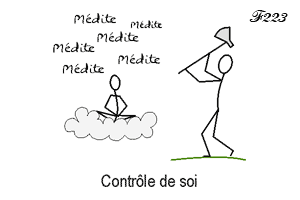 |
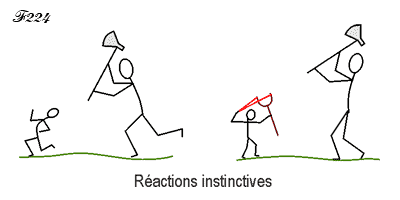 |
In reality, the same situation can lead to reasonable or instinctive responses.
Often it is the vital behaviours that are inhibited..
Often it is the vital behaviours that are inhibited..
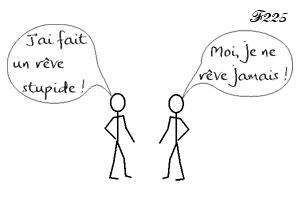 |
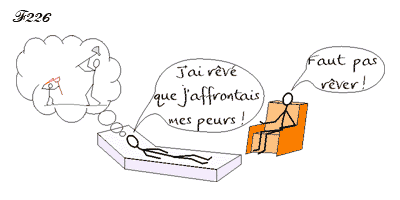 |
In many cases, the importance of the dream can be denied.
It is therefore by taking an interest in neuroscience research that we will now try to understand how our consciousness functions, and what differentiates it from that other capacity of the brain which escapes us and belongs to the domain we call « the unconscious ».
3rd stage of dream interpretation :
La conscience : (in french)
Consciousness : (soon)

